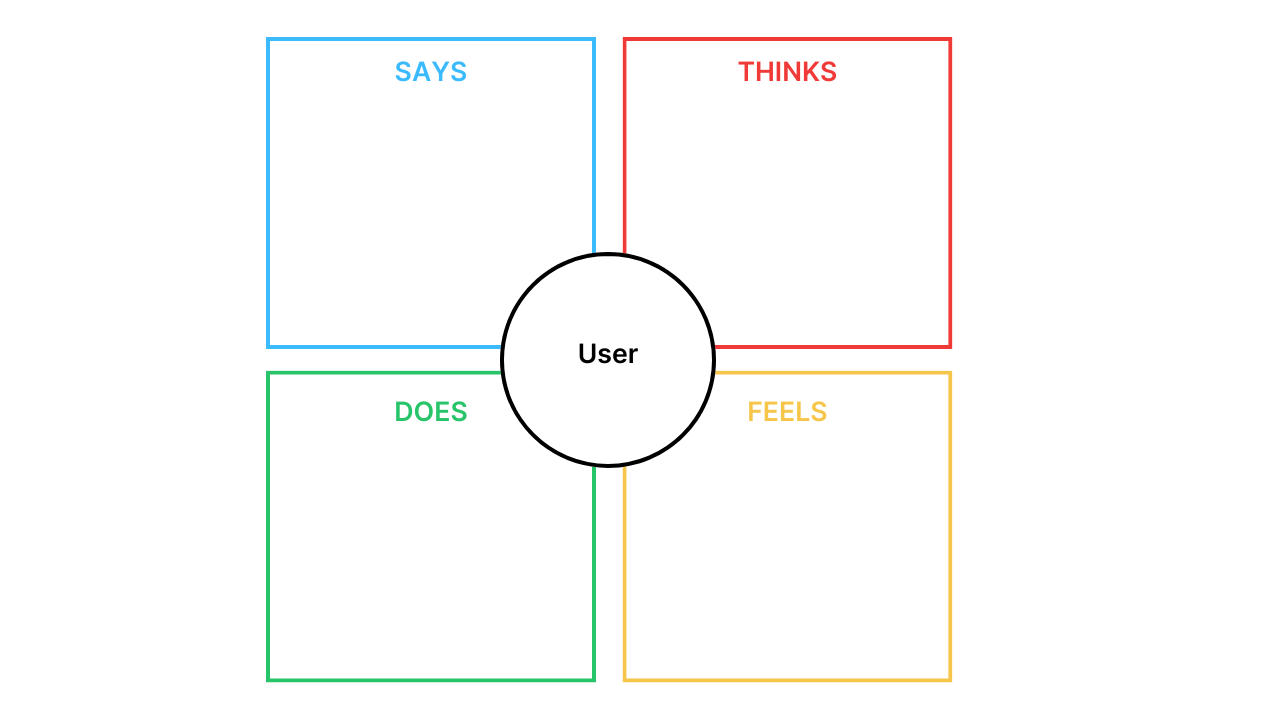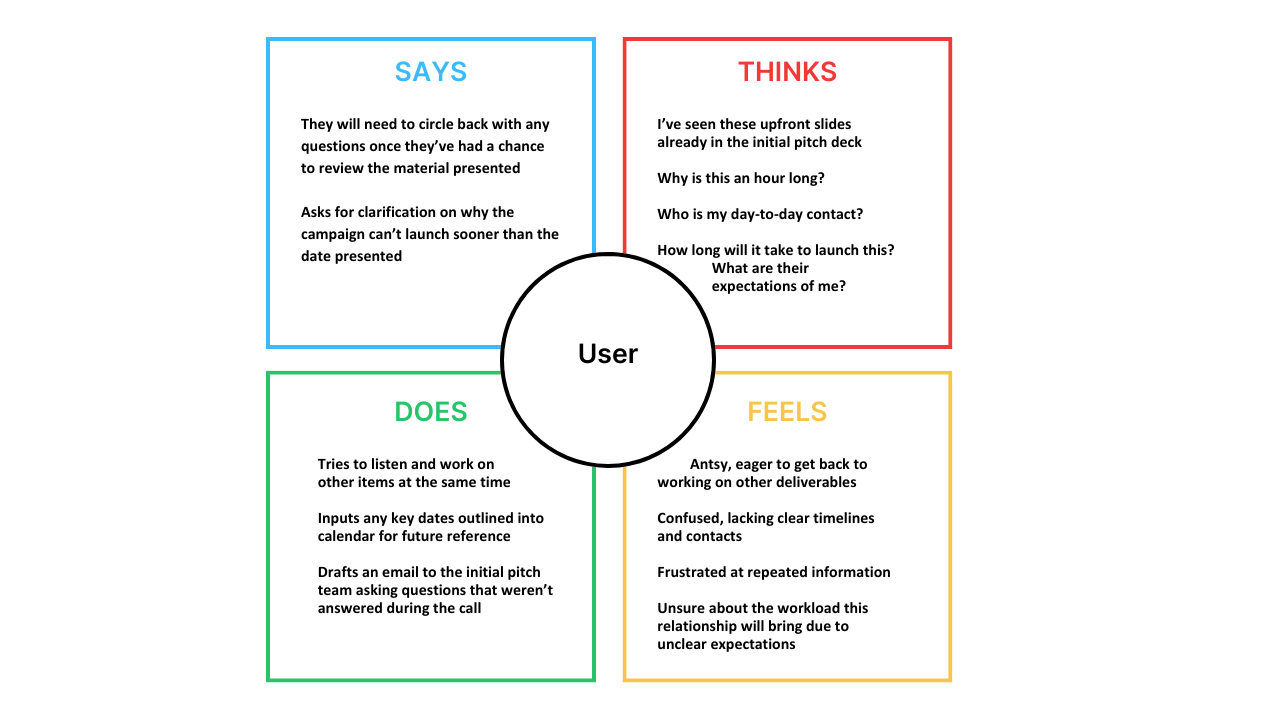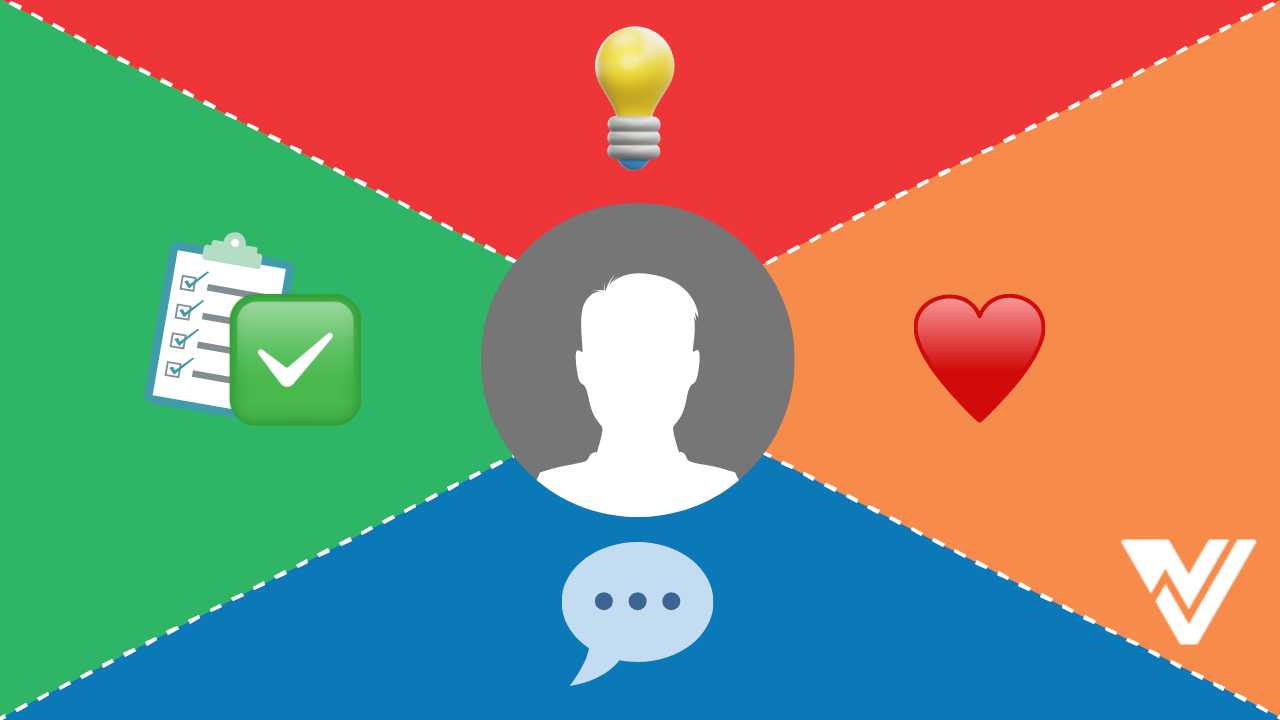Working in an agency environment demands a wide range of soft skills from time management to being a team player and a skilled conversationalist. While these skills are usually learned through experience and over a long period of time, there are tools available that can help you develop your skillset – regardless of what stage you’re at in your career.
One of these tools is empathy maps and in this article, we’ll learn how empathy maps can be applied in an agency setting to help with anything from improving client relationships to team building.
What is an empathy map?
I first came across empathy maps when taking a strategy course covering how to effectively build a target audience from scratch. As we learned the ins and outs of building an empathy map for our assigned personas, I began to apply this in my day-to-day role in the Client Success Department at Viral Nation.
With this in mind, I began to expand this thinking and applying empathy maps to my other interpersonal relationships at work.
An empathy map is defined as a collaborative visualization used to articulate what we know about a particular type of user. It externalizes knowledge about users in order to 1) create a shared understanding of user needs, and 2) aid in decision making.
Empathy maps are often used as a first step in developing clear personas within a target audience, and these maps can help your team predict how a specific group thinks, feels, and acts when it comes to specific topics.
While this tactic is traditionally used by product designers (UX designers, web development teams, creative strategists, etc.), there is no rule that says this can’t be applied across interpersonal relationships in everyday life, including client relationships.
Empathy maps are best applied on a one-to-one basis, meaning each unique persona gets their own map to best understand how to approach communications with them moving forward. An example template of this can be found below:

Applying empathy maps to client relationships
In many agencies, the Accounts or execution team does not usually get to meet the client team until the partnership contract is signed. This gives the execution team an opportunity to prepare for this specific persona based on feedback from top-of-funnel contacts within the agency such as the sales or pitch teams.
Using initial details provided by other team members such as approximate age, career background, and general first impressions will create a baseline for building an empathy map.
With these details, the execution team can build a high-level empathy map to predict how best to deliver key information and start the partnership off on the right foot. This can include optimal ways to present the kick-off call information, compiling questions regarding a campaign brief, or outlining key milestones for the project.
For example, if the client team is coming from a more traditional corporate background, the empathy map can guide your team on how to deliver information and client reports in easily accessible formats that best fit the audience such as a simplified PowerPoint deck rather than interactive presentations that require a more complex setup.
How to improve client kick-off calls with an empathy map
Let’s assume that the following key information is already known about yur new client:
- The primary client identifies as male and is between 40-54 years old
- He has a strong corporate background at companies with a more traditional business model
- His role requires working with multiple agency partners
- He has minimal experience working with influencers, facilitating this as a new ask from leadership
So with that in mind, here’s what an empathy map for this client could look like:

Based on this empathy map, your execution team can optimize their typical kick-off call structure as follows:
- Cross-reference the presentation with the initial pitch deck to avoid overlap or repetition
- Include only essential information to accommodate busy calendars
- Clearly outline the process of escalation and key contacts within your execution team
- Include additional context regarding influencer marketing, such as specifying key steps that take longer than typical content production to explain the required lead time
- Use a workback schedule to clearly outline the above steps, the client’s expected turnaround times, and a standard turnaround time that your team will adhere to as well
- Build in time for a productive question and answer session following an overview of the project
- Follow up with an email sent to key stakeholders outlining all information in writing for easy reference
3 other applications for empathy maps in an agency setting
As mentioned earlier, an empathy map is great for the start of a new relationship, but it can come in handy in other contexts, too. They can be instrumental in repairing or navigating existing client relationships.
1. Prepping for a difficult conversation or client pitch
For example, you can build an empathy map to help you prepare for a difficult conversation with a client or colleague. Teams outside of executional work can also benefit from creating an empathy map, especially when preparing for a big pitch or results presentation.
2. Improving relationships with coworkers
These can also be helpful with coworker relationships. For example, if you are joining a new team or working with a new direct manager for the first time, having a map will allow you to think through a variety of possible outcomes and adjust your approach accordingly.
3. Collaboration and team-building
Similarly, building an empathy map does not need to be a solo activity. This can be leveraged as a team building exercise to prepare for a new client onboarding, or a new team member joining an existing department.
Final Words
In summary, empathy maps are a valuable tool that can be leveraged at any point in a relationship to assist you in better understanding your audience.
Zooming out, empathy maps are a tool that can even be applied to friendships, romantic relationships, and family relationships.
When working in a role that requires effective communication and a deep understanding of your audience at all times, implementing a standardized process to provide each audience member with the same level of consideration can greatly improve working relationships. And as a result, it can bring about improved working processes, team efficiency, campaign results, and overall sentiment of the experience for everyone involved.
